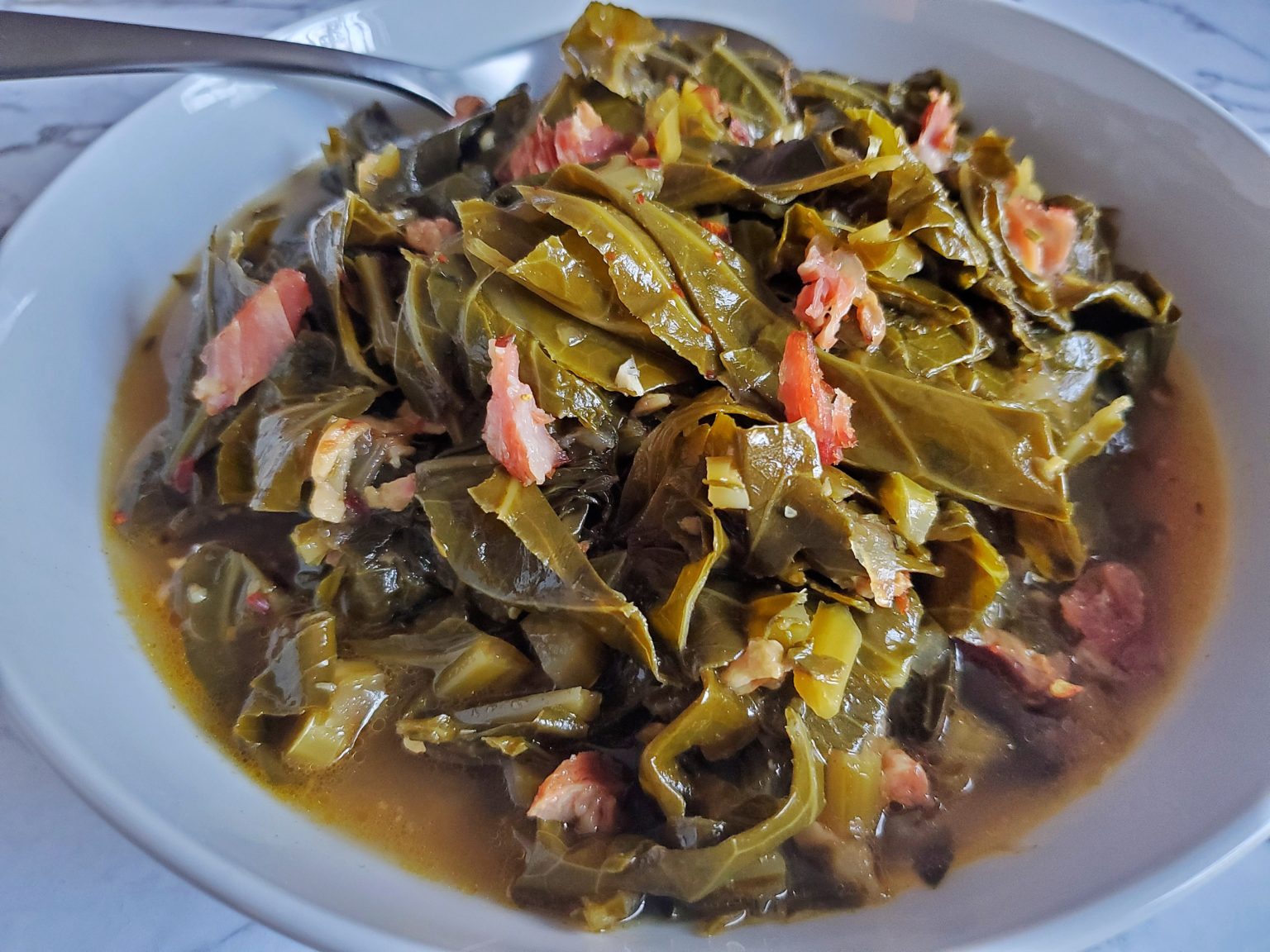
Collard Greens 101: Beginner-Friendly
Growing up in the Southern mountains meant consuming fresh-grown greens of all kinds like mustard, turnip, collard, kale, spinach, and yep even dandelion and beet greens.
Even to this day, my Grandma Barb’s garden flourishes with greens of all kinds, and I just love “shopping” there. It’s impossible to leave her house without hearing “Take something from the garden.”
My favorite greens continue to be collard greens! There is just something about those thick, dark leaves when prepared Southern-style that warms my soul!
Since Fall is right around the corner, I’ve decided to plant my own heirloom collard greens. Maybe I’ll do a post on how to plant collard greens if this crop survives.
Until then, I’ll keep shopping for greens from the Farmers Market and Grandma’s house!
Collard greens are such an incredible plant full of nutrients, flavor, and a rich history!
Before we get into creating THE BEST collard greens recipe, grab a glass of sweet tea, and let’s learn a little about these powerhouse greens!
Liquid Gold AKA Collard Green Pot Likkur
It’s impossible to talk about Southern collard greens without mentioning one of the best features, the pot likkur!
As mentioned above, pot likkur is the rich, savory broth-like gravy created when you slow-cook a pot of collard greens.
The base of the pot likkur is usually water or chicken or vegetable broth. I prefer chicken broth. It creates such a rich and flavor pot likkur!
The pot liquor is this collard green recipe so delicious because it’s been slowly simmering with the collards, onion, garlic, red pepper flakes, and meat! It’s full of nutrients from the collard greens and seriously delicious enough to drink on its own.
What can I add pot likkur to? If you decide to increase the liquid in the recipe so that you have a lot of savory pot likkur there are many ways that you can use it to enhance other dishes!
Use it any way that you would use regular broth. I like to add it to mashed potatoes, and brown gravy and also use it for cooking my rice! It’s a real treasure.
Why do you put vinegar in collard greens?
Can you add vinegar to collard greens?
Don’t forget to add apple cider vinegar to the broth. This might seem like an unusual addition if you’re new to making collard greens, but the vinegar adds a welcome tangy note that brightens the dish and balances out the salty, savory flavors. A tablespoon of sugar also helps balance out the greens’ potential bitterness.
What is good substitute for collard greens?
Collard greens are easily substituted by a variety of greens. My favorite leafy green is kale, and it makes a good substitute for collard greens. Kale has a similar taste and texture to collard greens making kale a great sub. Spinach can also be a good substitute for collard greens but keep in mind that it will cook more quickly than kale or collard greens. Another option is cabbage, typically cabbage is inexpensive, and it can be used in many ways, my favorite use is coleslaw, but it can also be used in cooked preparations too.
Why do you add vinegar to collards?
So, the main reason for this addition is that vinegar complements the flavor. Also, collards are often cooked in rich chicken broth and bacon or ham hock so adding a little vinegar seems to balance out the richness. While collards are delicious when prepared right, they can be horrible if certain things aren’t carefully attended to.
Do you add vinegar to Greens?
Most people like to add a little vinegar with the broth when cooking the greens. However, it is traditional to also serve the dish with vinegar and hot sauce at the table so that people can add a little more if they want to. How much vinegar should I add?
